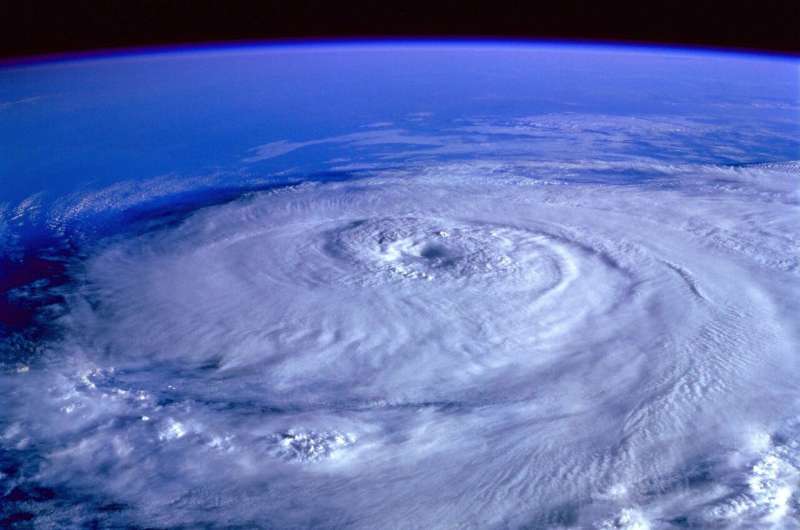Credit: CC0 Public Domain
Forecasters can use images in social media to better communicate weather related hazards of hurricanes, according to a pair of new studies. The findings are published in the journals Natural Hazards Review and Weather, Climate, and Society
Scientists at the U.S. National Science Foundation National Center for Atmospheric Research (NSF NCAR) analyzed 2017 Twitter (now X) data related to two hurricanes—Harvey and Irma. The researchers found that forecast information communicated in the early stages of storm development, when the threat posed by a hurricane is uncertain, sets the stage for how people react to subsequent warning messages.
The research team also identified ways authoritative sources, such as the National Weather Service, broadcast meteorologists, and emergency managers, can better engage at-risk community members.
"When we began this research, a lot of work had been done analyzing Twitter data in the post-disaster space, and we were interested in how people were responding to weather forecast information in earlier stages, especially as predictions change," said NSF NCAR scientist Rebecca Morss, lead author of the Hurricane Harvey paper.
"Twitter provided a natural laboratory for us to look at what communications people are responding to and what information they are sharing. This kind of research can help the meteorological community learn what are the most important things to communicate and how to improve that messaging."
Risk information ecosystem
Harvey and Irma both occurred in 2017, but the two storms behaved very differently from one another. Harvey was an atypical hurricane that rapidly intensified and then lingered along the Texas coast for a few days, leading to devastating flooding in the Houston region. Whereas Irma was forecast well in advance of making landfall and followed a more typical movement pattern over land, leading to significant risks from strong winds and storm surge.
Combined, the two storms provided complementary data about the different types of hurricane risks that need to be communicated amid varying levels of uncertainty.
Twitter offered the NSF NCAR researchers a detailed log of how people were sharing and reacting to information in real time. The research team developed a dataset of tweets that was relevant to each hurricane and focused on tweets posted by authoritative sources.
To evaluate how the tweets communicated information about the storms to those in harm's way, the researchers categorized tweets based on the type of visuals used and looked for patterns in what image types were retweeted and interacted with the most. Additionally, the researchers examined the content of replies to forecast and warning tweets to explore how people in at-risk areas make sense of and respond to a hurricane's evolving threat.
"In early stages of the threat, we could see a really clear cadence that every six hours there would be an uptick in Twitter conversation about the hurricanes," said NSF NCAR scientist Robert Prestley, lead author of the Hurricane Irma paper.
"This was driven by the National Hurricane Center putting out updated forecast information. That information would then be redistributed by broadcast meteorologists, emergency managers, news media, and weather enthusiasts, and the conversation would grow from there. It really highlighted the key role of the National Weather Service in leading this communication."
Morss and Prestley also observed that the role of the national and local National Weather Service (NWS) offices shifted over the course of a hurricane. As the storm developed, NWS centers such as the National Hurricane Center played the leading role in spreading information, but as the storms began to impact communities, local NWS offices took the lead in generating locally relevant forecast and warning content.
More information: Rebecca E. Morss et al, Information Dissemination, Diffusion, and Response during Hurricane Harvey: Analysis of Evolving Forecast and Warning Imagery Posted Online, Natural Hazards Review (2024). DOI: 10.1061/NHREFO.NHENG-1802
Rebecca E. Morss et al, Contextualizing Disaster Phases Using Social Media Data: Hurricane Risk Visualizations during the Forecast and Warning Phase of Hurricane Irma, Weather, Climate, and Society (2024). DOI: 10.1175/WCAS-D-23-0046.1
Provided by National Center for Atmospheric Research
























